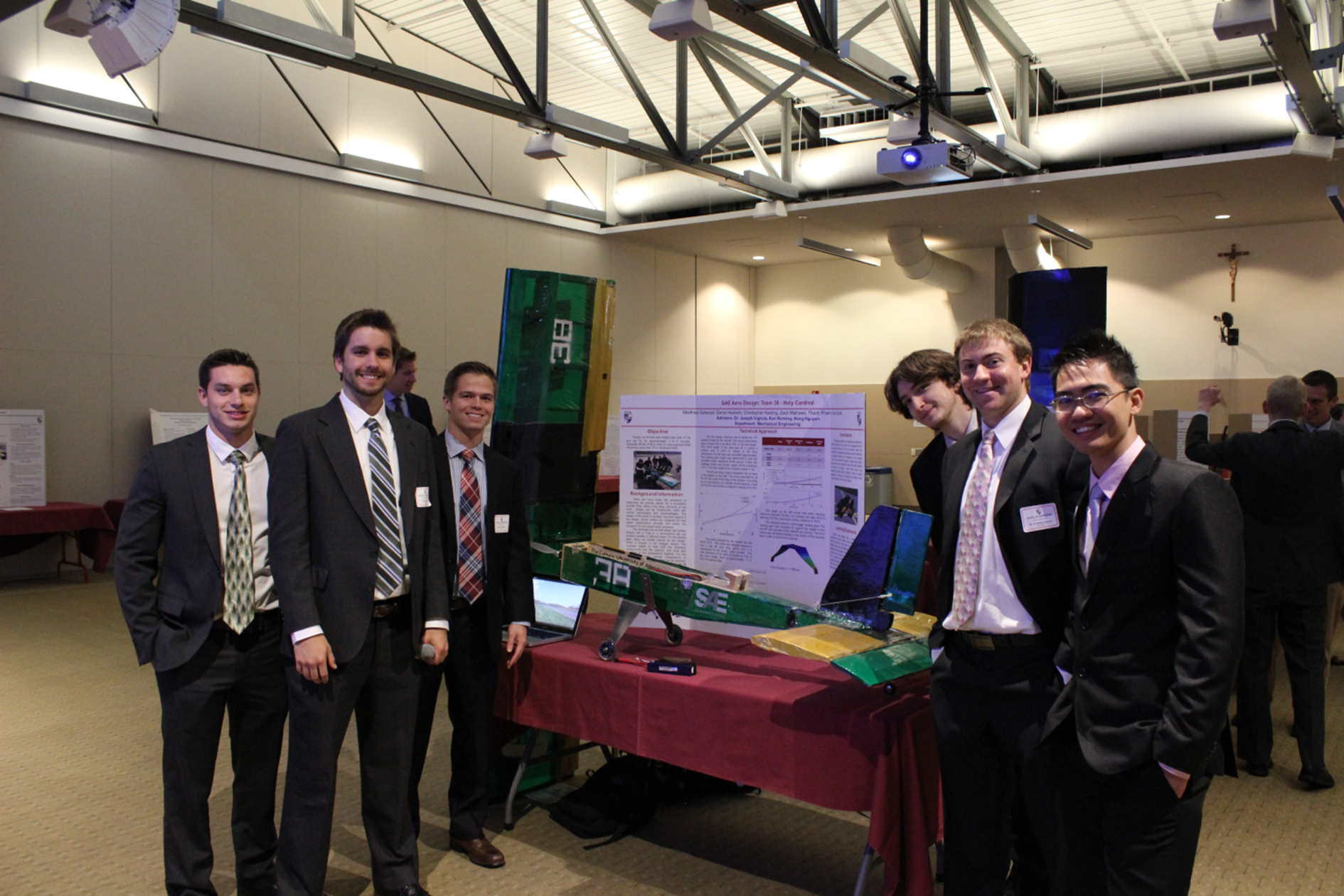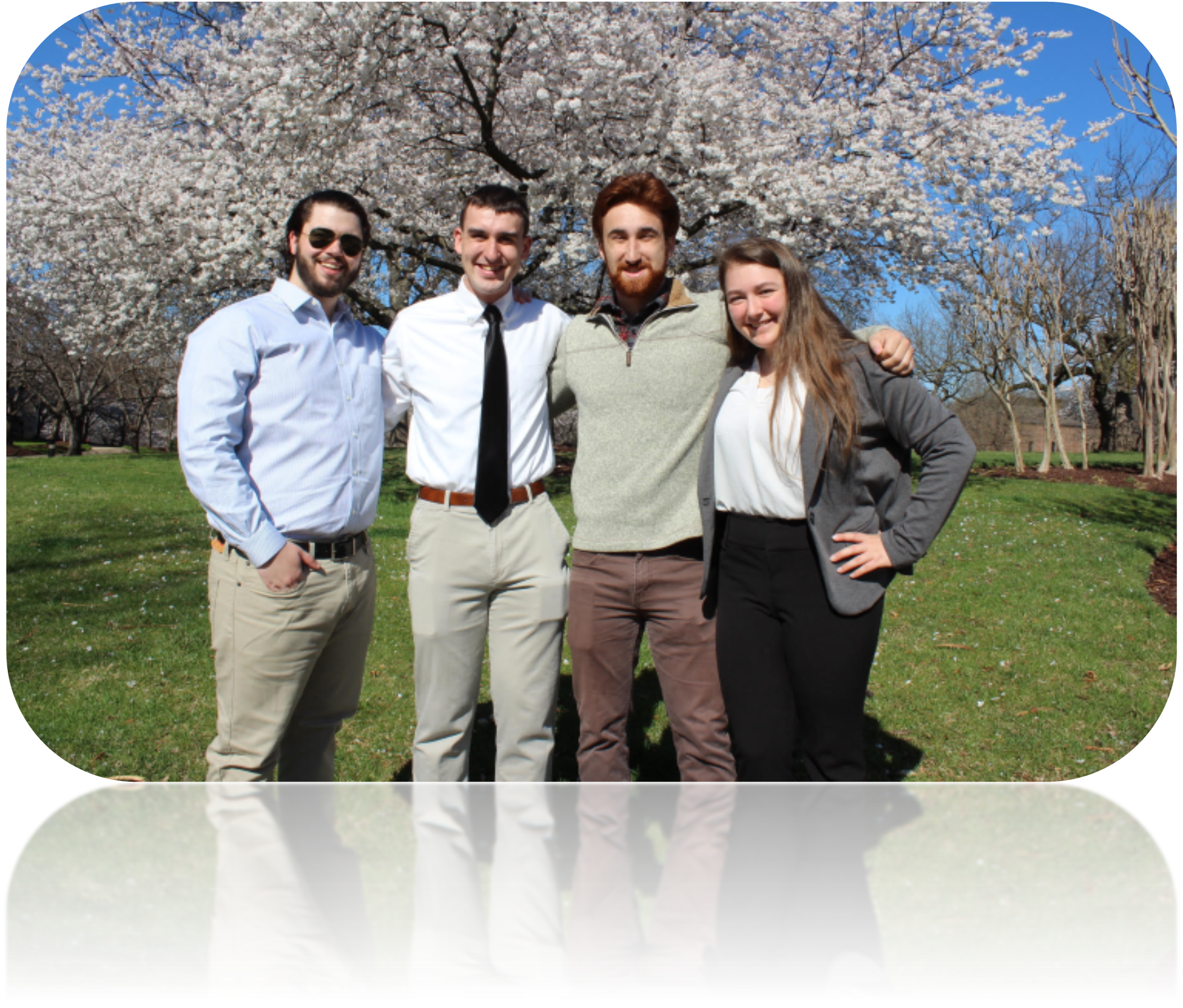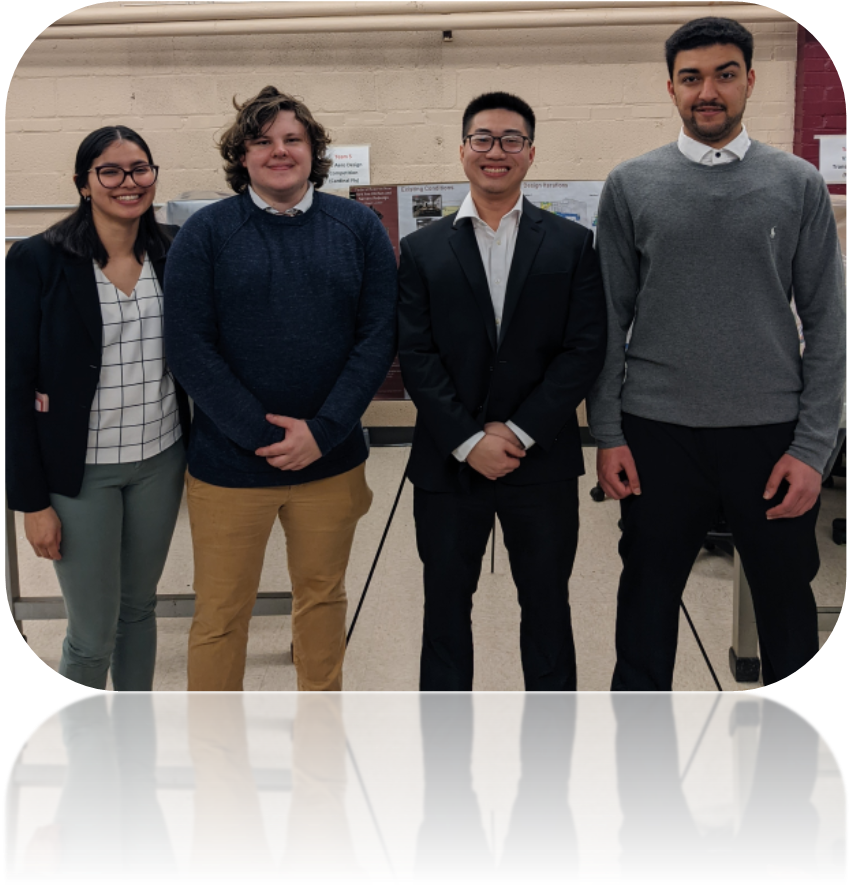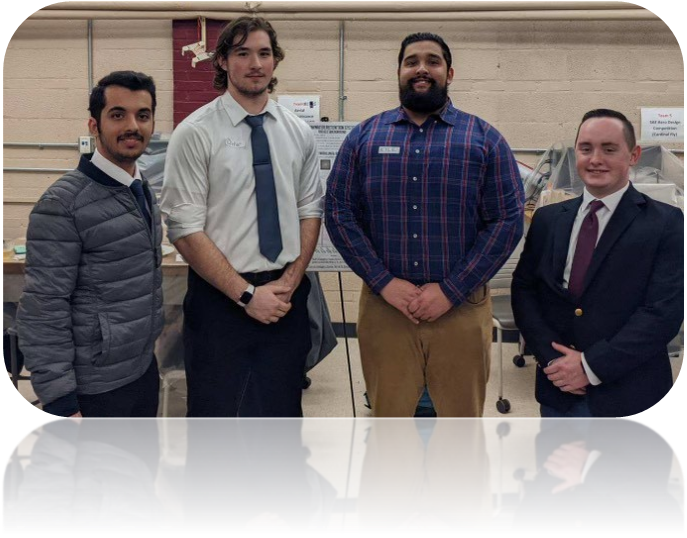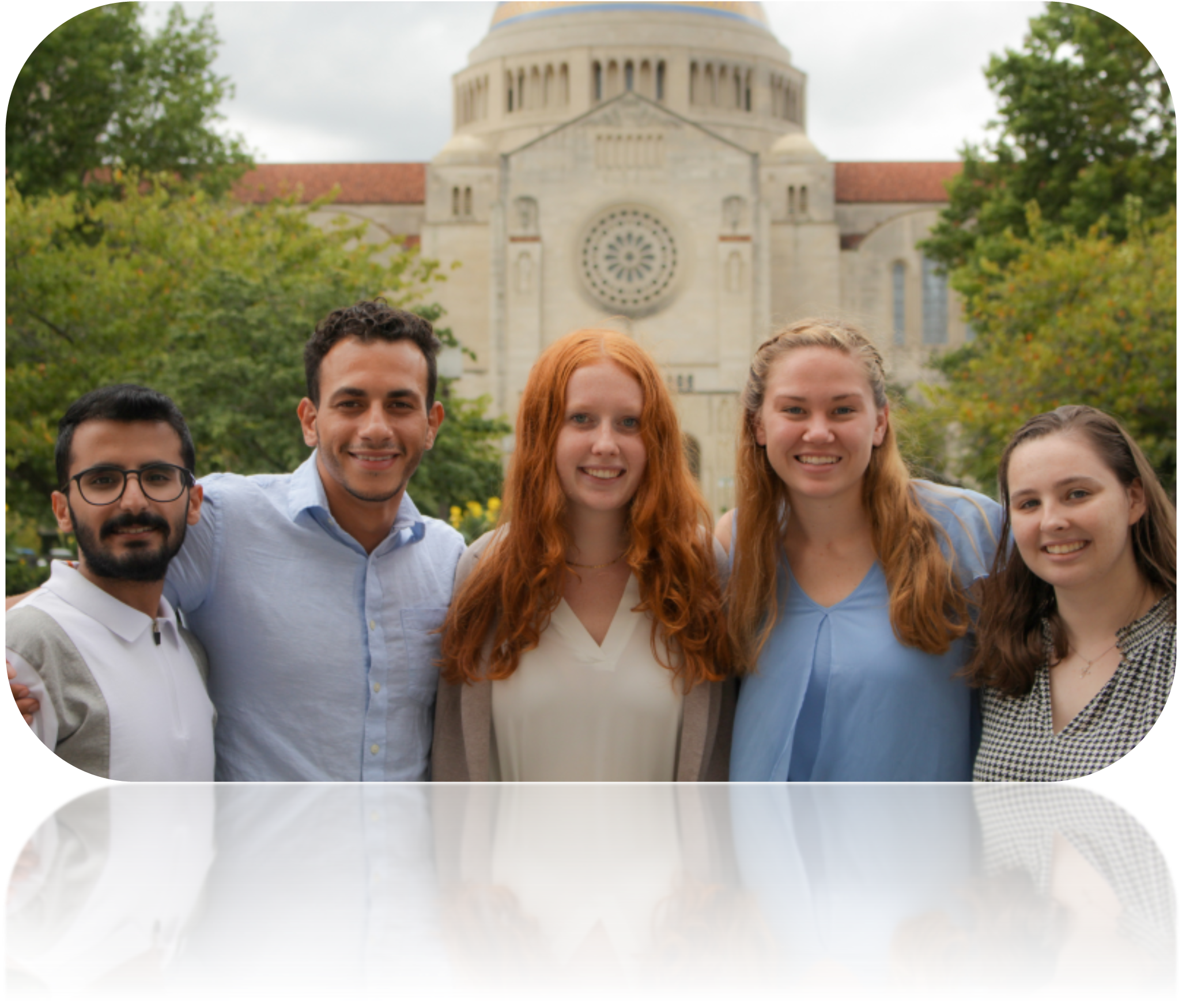Microplastics Clean Room Design for The Catholic University of America's AnthroHydro Research Group
Kimberly McGroary, Mitchell Bundschuh, Thomas Macyko, Jason Martinez
Advisor: Dr. Jason Davison
The Catholic University of America’s AnthroHydro Research Group has requested the design and construction of a clean room to provide a sterile environment for research of the Anacostia watershed. The creation of this lab space requires the construction of partitions made of glass, steel sheet metal, and other materials that will divide the lab in Pangborn Hall, creating two separate spaces. The use of a High Efficiency Particulate Air (HEPA) fan filter unit will be constructed to trap microscopic particles as well as produce a positive air pressure environment, preventing any potential airborne contaminants from entering the lab. The team designed a partition scheme composed of glass and sheet metal, held together by an internal wooden frame. The team made use of hand and power tools to create the partition within the allotted space. Additional small renovations were made in order for the partition to be installed. Once the project is completed, the AnthroHydro Research Group will be making use of the laboratory space to conduct research pertaining to microplastics.
Modeling Pedestrian Flow in the Federal Reserve
Kimberly Sorto, Kiet Ngo, Mubarak Almarri, John Mader
Advisor: Dr. Jason Davison
This presentation focuses on optimizing the renovation of the Federal Reserve’s New York Ave building’s kitchen, servery, and dining area. The design project investigates the replacement of equipment, furniture, and finishes. The project also focused on maximizing energy efficiency as the Federal Reserve is in the process of improving their buildings to be more environmentally friendly. The Reserve work incorporates energy efficient equipment and divest from fossil fuel dependency. We used the Legion software package, a 3D pedestrian flow analyzer, to calculate the best possible layouts for our designs. We developed three design options and simulated the optimal human-flow in each. After running each simulation, we considered the program parameters, including crowd density, evacuation, space utilization, and preferred paths through visual techniques/models. This project approached designing a kitchen, servery and dining area in a new way. By focusing on the pedestrian flow throughout the spaces and how they could be optimized, we were able to find the maximum amount of furniture and equipment while maintaining safe egress for building occupants.
Rayburn House Office Building Storm Water Retention System
Dieter Kerat, Kyle Jaggers, Patrick Keegan, Omar Almutairi
Advisor: Dr. Jason Davison
This engineering design project was prepared for the Architect of the Capitol and is located at the Rayburn House Office Building. There currently is an emphasis on creating green infrastructure engineering designs that also helps reduce the amounts of harmful stormwater that causes damage to the environment. In developed areas such as Washington D.C, stormwater runs off surfaces and carries pollutants with it into the environment such as the Anacostia River Watershed. The solution to this is to design a courtyard within a historical space that has enough Green Infrastructure (GI) to catch and hold onto stormwater in addition to the existing retention system. This GI will earn stormwater retention credits (SRC), which is a system in place in D.C. that allows for the resell or reuse of saved up credits. There are drains in place to collect excess stormwater and flow it into a retention system for filtration and re-use. We used Autodesk Revit, Gifmod and Sap2000 to create our three-dimensional models, water flow simulations, and structural load analysis. The benefit of our design is to generate as much SRC as possible while keeping the historical traits within the courtyard.
Renovation of Visitor Screening and Amenity Space for the Federal Reserve
Julia Schlottmann, Christina Brown, Lauren Roberson, Mohammed Alajmi
Advisor: Dr. Jason Davison
This presentation will discuss the development of a new visitor screening and amenity area for the Federal Reserve located just two blocks from The White House. The building serves 500 employees and 4-5 visitors at a given time; the project covers an area of 3,300 square feet and an estimated budget of about $1,000,000. The requested design by the Federal Reserve is a modern style that places an emphasis on being environmentally conscious and accessibility focused. Through detailed security specifications such as x-ray machines, magnetometers, ballistic-rated glass, cameras, and aeroturn card-scanning doors, the design adheres engineering and government codes and standards. Given the importance of security, accessibility specifications, and determining the best occupant experience the client wanted, the optimal flow through the design was achieved through modeling software. After creating 3D building models using Revit, the team converted the models into a numerical software package to simulate pedestrian foot traffic, and describe how people will move through a space. Involving client feedback to motivate each design emulates a realistic professional project.

